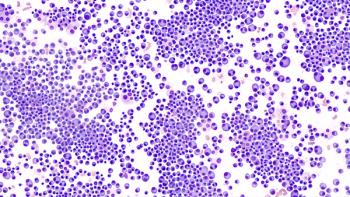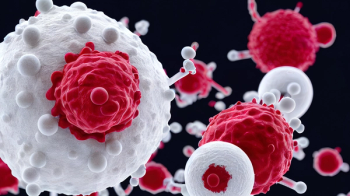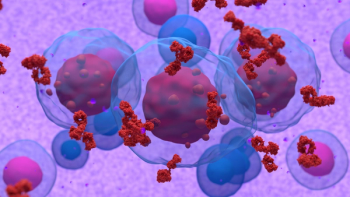
Conference Coverage
Latest Content

Real, Placebo Acupuncture Improve Cognitive Outcomes in Breast Cancer Survivors

Opinion: CAR T-Cell Therapy Shows Promise in Gastric and GEJ Cancers

1L Giredestrant Yields Improved IDFS vs ET in ER+/HER2– Breast Cancer

Maintenance Tucatinib/HP Improves PFS Post 2-Year Mark in HER2+ mBC

FDA OKs Subcutaneous Amivantamab Across All NSCLC Indications

Shorts







Podcasts
Videos
All News

The FDA has greenlit treatment with rucaparib for previously treated patients with BRCA-mutated metastatic castration-resistant prostate cancer.

A mobile health intervention was linked with an increase in general and cancer-specific QOL in adolescent and young adult breast cancer survivors.

Hormone replacement therapy was associated with a lower risk of developing BRCA1– or BRCA2–mutated breast cancer among those already at higher risk.

The treatment combination of T-DXd and pertuzumab was granted FDA approval in the first-line for unresectable or metastatic HER2-positive breast cancer.

The FDA has approved niraparib and abiraterone acetate with prednisone for the treatment of patients with BRCA2-mutated metastatic hormone-sensitive prostate cancer.

Subcutaneous daratumumab plus teclistamab improved survival outcomes in patients with R/R multiple myeloma vs standard daratumumab-based regimens.

Preoperative radiation and pembrolizumab improved T-cell infiltration in patients with higher-risk, HR-positive, HER2-negative, early-stage breast cancer.

Phase 2 data demonstrated similar pharmacokinetic profiles between subcutaneous azacitidine and an oral combination of azacitidine and cedazuridine.

The use of sacituzumab govitecan to treat HR+/HER2– metastatic breast cancer did not reach its primary end point of progression-free survival.

Patients with relapsed/refractory large B-cell lymphoma treated with glofitamab or epcoritamab experienced early disease progression.

Lillian Rodich, PA-C, MPH, discusses how integrative oncology can give patients practical strategies for managing symptoms, regardless of financial barriers.

Six-month complete response with frontline axicabtagene ciloleucel predicts long-term survival in patients with high-risk large B-cell lymphoma.

Dexamethasone reduced the severity of ICANS but did not impact the rates of ICANS or CRS in patients with LBCL receiving axi-cel.

Phase 3 trial results demonstrated a significant benefit with the BTK inhibitor pirtobrutinib vs bendamustine plus rituximab in patients with untreated CLL/SLL.

Subcutaneous bispecific antibody cevostamab demonstrated early efficacy and safety in patients with relapsed or refractory multiple myeloma.
























































































